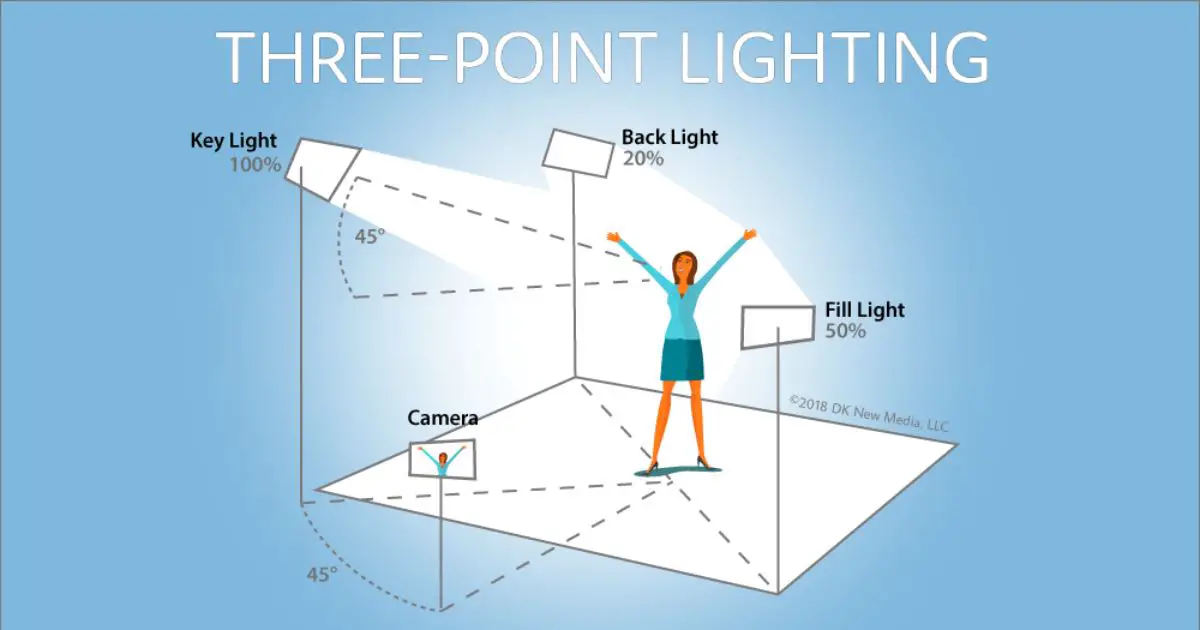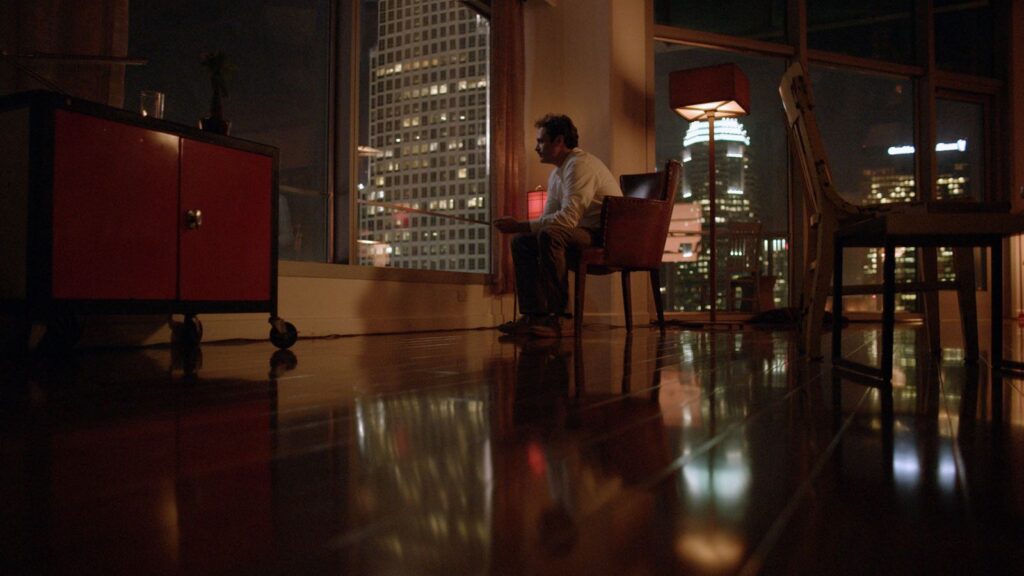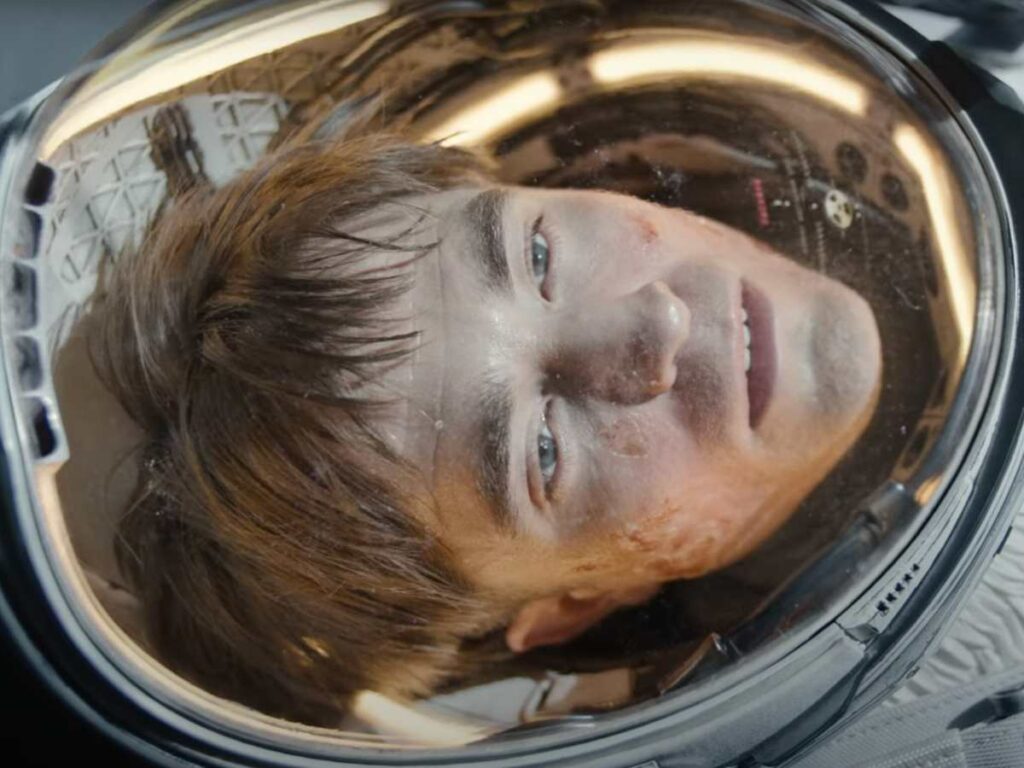The moving images on screen have the ability to elicit emotional response in how they’re captured and presented. Much of how the viewer responds to these images has to do with the lighting. In filmmaking, light is more than just a source of illumination. It’s one of the most powerful tools to help hold the attention of the viewer. Its purpose is to reveal the underlying emotions and subtext of a scene by creating the mood and tone of a scene to elicit psychological reactions. Lighting helps highlight, hide or define certain elements of the frame. It adds shape and form to the image, directing the viewer’s focus to where the filmmaker or cinematographer requires it to be.
Besides, it lends depth and three-dimensionality, enhancing the overall composition of a scene. All these factors help create cinematic lighting.
Who Takes Care of Film Lighting on the Set?

Taking into consideration both the technical and creative aspects of a film, the responsibility of working with and controlling light completely rests with a cinematographer. The director of the film informs him about the mood of a particular scene from the outset. It is then the onus of the cinematographer to fulfil the vision of the director. To accomplish his job efficiently, the cinematographer collaborates with the gaffer and discusses the visual scheme of the film. So, the cinematographer’s role is to take care of the position, strength, quality, contrast and color of the light, to achieve the ‘look’ of the film. Whereas, the gaffer helps the cinematographer execute and design the lighting plan.
Different Types of Film Lighting Techniques
Lighting is extremely critical to storytelling. It helps set up the mood, immediately drawing viewers into the action. The best lighting in movies can be achieved by knowing what are the different tricks and techniques and employing them effectively into your storytelling. Very quickly then, let’s break down the different types of film lighting techniques, how to use them and what they can do to your story:
1. Key lighting
This kind of lighting casts a clear, sharp shadow and is achieved from a very small light source. The smaller the source, the harder the light will be. Secondly, it should be placed higher than the subject. Thirdly, the closer the fill light is to the camera, the fewer shadows it will create.
Use: Also known as specular light, it is used to light up the primary character or object visible on the screen.
Example: In this powerful scene from A Few Good Men (1992) the use of key light on the face of the primary characters allows viewers to participate in the compelling David vs Goliath courtroom battle.
2. Fill lighting
Fill lighting adds softness to the shadows and is placed opposite to the key light. It is not as strong as the key light. These are usually soft in quality and dimmer than the key light.
Use: It is used to fill in shadows caused by the key lighting without creating a shadow of its own.
Example: In The Man Who Wasn’t There (2001) Ed Crane, played by Billy Bob Thornton, has been lit with the fill light just before he murders Big Dave Brewster, played by James Gandolfini. The fill lighting brings out the evil nature of Ed.
3. Backlighting
This is the type of lighting that is projected on a person or objects from behind or above. The light is usually positioned in line with the subject and the camera.
Use: It is used to create highlights on the subject as a means of separating it from the background so that the darkness stimulates the viewer’s imagination.
Example: The creative use of backlight in the climax action scene of Skyfall (2012) is used to separate the actor from the dark background, and gives the scene more depth and drama.
The key light, fill light, and the backlight make up a three-point lighting setup. Three-point lighting is a standard method used by cinematographers. By using three separate positions, they can light up the subject as well as control shadows produced by direct lighting.

4. Side lighting or chiaroscuro lighting
In side lighting, the direction of the light is a major determinant not only of the shadows but also in creating the emotional tone of a shot. Also known as ‘chiaroscuro’ lighting, it is achieved by creating a high contrast between light and dark to create a dramatic mood and draw the viewer’s eye to one part of the composition.
Use: It is used for emphasizing the contours of the actor’s face for a high-contrast dramatic effect and revealing texture.
Example: In Apocalypse Now (1979) Italian cinematographer Vittorio Storaro uses side lighting on the face of Colonel Kurtz, played by Marlon Brando, to bring out his extremely complex personality.
5. Practical lighting
Any source of light that’s actually visible in the frame is called practical lighting or ‘practicals.’ Besides illuminating the subject it may also help enhance the look and ambience of a scene. These light sources could range from lamps to car headlights.
Use: If used cleverly, it can add depth and dimension to a scene. It also lends a sense of realism to a scene, immediately calling viewers’ attention into the action.
Example: In this scene from the Goodfellas (1990) the practicals of the restaurant create an atmosphere of amusement followed by a moment of heightened tension and then back to revelry.
6. Hard lighting
A direct beam of light from the midday sun or a small lighting source creates hard lighting. A hard light casts a clear, distinct shadow with harsh lines.
Use: It is consciously used to draw attention to a particular subject within the frame.
Example: In this scene from Wonder Women 1984 (2020), young Diana participates in an athletic event on Themyscira against older Amazons. Hard lighting has been used to highlight the rigor of her task.
7. Soft lighting
The most elegant and aesthetic way of lighting, soft lighting in film illuminates the whole frame as opposed to only the subject. This light will produce soft shadows or no shadows at all. It lends a balanced, evenly look to the frame and is created through either a light fixture or diffusion sheet.
Use: It is generally used to recreate indistinct shades of light from exterior sources.
Example: In this scene from Her (2013), in all the daytime shots Theodore, played by Joaquin Phoenix, is in a blissful state of mind as he basks in the happiness of being in a relationship. The soft lighting on his face expresses his joviality.
8. High-key lighting
This kind of lighting is created by using frontal lighting. The nature of the illumination is even and flat so high-key lighting provides importance to the subject that has been captured by the camera. It is achieved by using large light sources and soft shadows. This kind of lighting is bright and shadowless with lots of fill light.
Use: It is used to brightly light a scene and suggests an upbeat mood and enthusiastic ambiance.
Example: In this scene from Harry Potter and the Deathly Hallows: Part 2 (2011) the high-key lighting helps achieve and accentuate a fantastical, fanciful look.
9. Low-key lighting
This is a kind of lighting that creates strong contrasts, sharp dark shadows, and an overall gloomy atmosphere. The scenes where low-key lighting is used are predominantly dark and filled with more shadows than light. There is little or no fill light.
Use: It is used for drawing attention to a serious subject matter or to bring out the darker, emotional side of a story, or a mysterious mood.
Example: Low-key lighting is used for a scene in Prisoners (2013) in order to reveal the dark theme and the mysterious twist at the end of the film.
10. Natural lighting
The light that is available naturally in a location and can be used as a lighting source is known as natural lighting. The source could be the sun, street lights, store signs, etc. This kind of lighting is different from practical lighting because the scenes have to be shot working with the existing lighting on the location. They should be strong enough to light a subject.
Use: It is used to shoot a particular shot or scene in available or ambient lighting.
Example: Academy Award-winning Spanish cinematographer Néstor Cuyás’ breakthrough use of natural lighting in Days of Heaven (1978) is regarded as a textbook in filmmaking. The following video explains how Almendros utilised available light to evoke the distinctive flavour of the period within the farming community of Texas Panhandle.
11. Motivated lighting
When a scene is lit with lights that are within the frame such as practicals, windows, skylights, signs, and so on, it is called motivated lighting. The difference between motivated and practical lighting is that the former enhances and replicates practical lighting.
Use: It is used to imitate natural light within a scene. The purpose of this style is to make the viewer intuitively understand where the light is coming from.
Example: In this scene from True Grit (2010) the oil lamps are clearly shown to be the motivation for the direction, color, and quality of the light.
12. Bounce Lighting
When the light that is reflected or bounced off a strong source toward the actor such as a wall or ceiling, lamps, or any film lighting kit or often a piece of polystyrene, it is called bounced lighting. Also, known as diffused light, it creates a larger area of evenly spread light.
Use: It is used for bouncing light as an indirect source rather than a direct source to enhance the mood and tone of the image
Example: In this scene from Arrival (2016), light bounced from the semi-transparent white wall creates an aura of doubt and mystery as Louise (Amy Adams) tries to decipher the complex signals from the aliens.
Cheaper/Budget Alternatives for Lighting
When a film is shot on a limited budget one has to attentively organize the lighting requirements of their film.
One of the best options is to write scenes that can be shot in available light with the sun as the lighting source. In this case, the weather and placement of the sun play a pivotal role to achieve the desired result. Early morning and late evening are great times for soft golden lighting. The sun changes intensity and color quite quickly towards the later end of the day. So it is important to keep a track of time.
Another option would be to light up scenes with bounced light in the form of a reflector. One can create a key, fill, backlight, and even illuminate objects in the background with reflective material. It can be very multi-faceted.
Or white bed sheets can be attached to a colored wall or colored ceiling to create a bounce light to provide the fill. There are dedicated tools such as silk or a foam board to do this, but a bounce light can also come from the wall or the ceiling. The possibilities are endless.
Lights from a Chinese lantern allow illuminating a large space in the room with just one light source. It helps to create a aesthetic soft light in every direction using a single fixture.
Shooting scenes in a practical lighting set-up is an economical choice too. Whether it’s halogen or work lights, one has to be consistent and match all the bulbs together.
Softboxes can be used as a diffuser to reduce harsh shadows and balance the lighting effects from a source. Even a bedsheet or parchment paper can be used for this purpose.
These are some cheaper alternatives for lighting in films. There are lots of other substitutes to light a scene with minimum lighting equipment. Budding and independent filmmakers will have to hone their abilities to juggle and creatively formulate possibilities to play with the rules of the lighting styles.
However, with the advent of modern equipment, fewer and fewer lights are required to shoot a film on a low budget. There are several affordable cameras, which perform brilliantly in low-light situations, opening up more innovative lighting possibilities than ever.
Conclusion
The evolution of technology has helped reprise cinematic styles and conventions. The development of different types of film lighting equipment has augmented the gamut of lighting methods available to the cinematographer. This has enabled contemporary filmmakers to adopt lighting as an important narrational tool. It emphasizes the fundamental role that lighting plays in shaping our experience of watching films.




